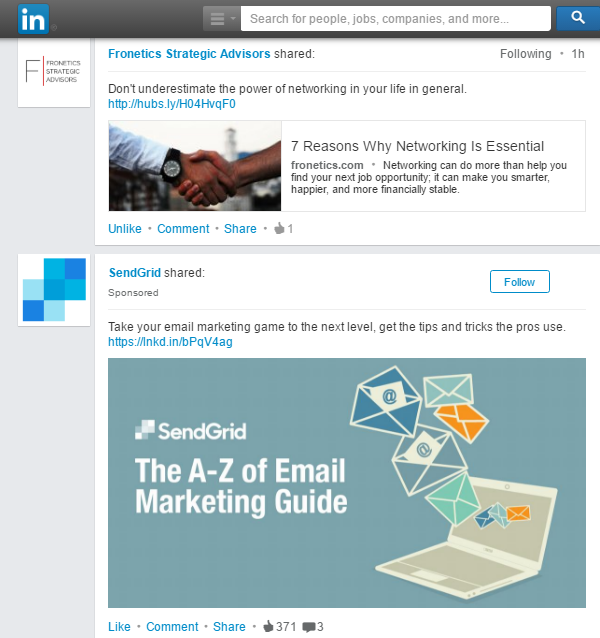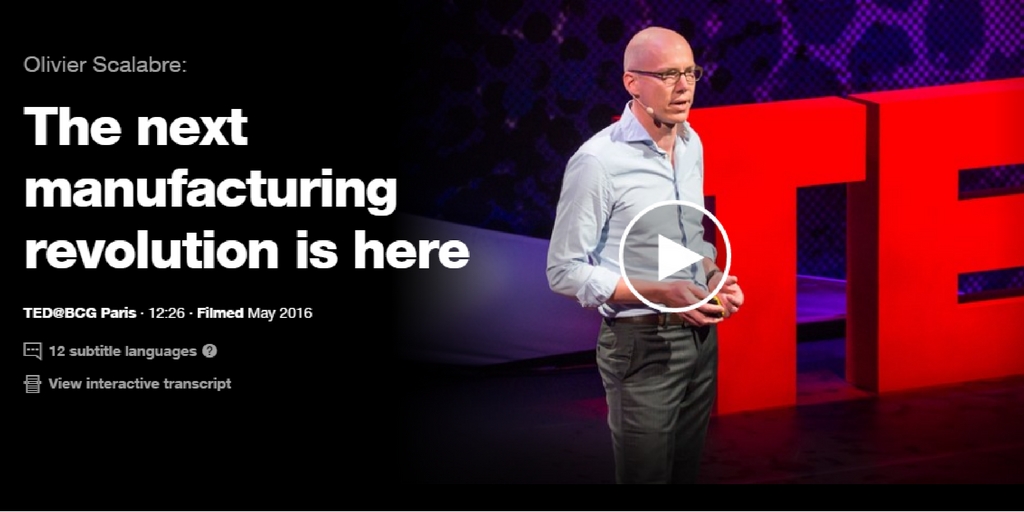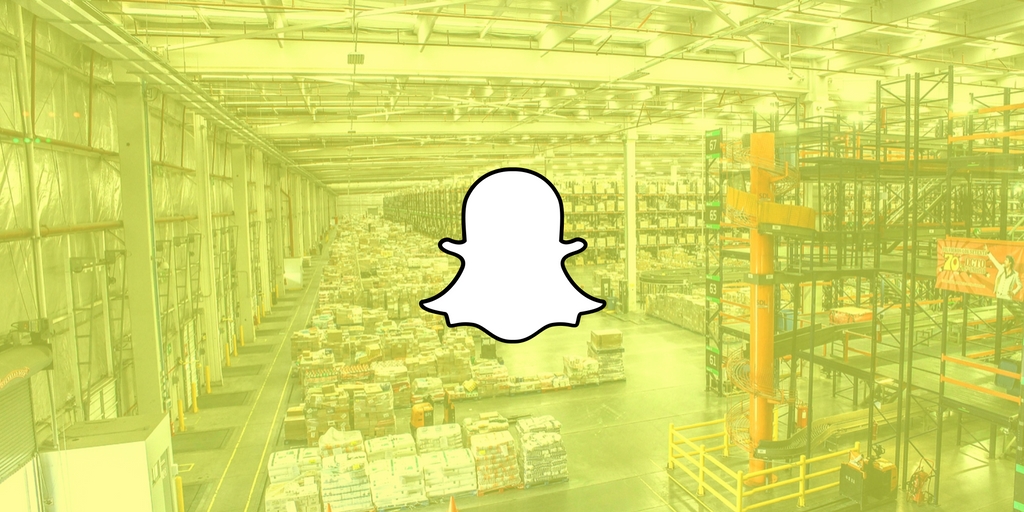
by Fronetics | Oct 20, 2016 | Big Data, Blog, Data/Analytics, Logistics, Manufacturing & Distribution, Strategy, Supply Chain, Warehousing & Materials Handling
These industry leaders are leveraging insights from big data to solve business problems and drive profitable customer action.
Big data is more than just a buzzword: It’s helping companies make big-impact business decisions based on customer behaviors, purchasing patterns, and preferences.
Not all organizations have the resources to invest in big data. But for those that do, the payoff can big significant. The trick, of course, is knowing which numbers to analyze, what can be predicted, how to use big data for your particular business needs.
Let’s look at five big brands that are leveraging big data successfully to drive profitable customer action.
How 5 big brands use big data
1. Amazon
Amazon’s free same-day delivery service, Prime Now, allows Prime members to shop for over 25,000 products that can be delivered to their doorsteps within two hours. How can Amazon accurately predict the specific wants of millions of people across the country at a given time to prepare local inventory for immediate delivery? Aside from efficient warehousing and logistics, the company uses data on purchase history to optimally locate and stock its warehouses. This strategy also helps to reduce the time inventory stays in stock, diminishing working capital requirement.
2. Starbucks
Have you ever wondered how two neighborhood Starbucks locations can both stay in business? The company examines data on local traffic, demographics, and customers to determine the potential success of a new location before expanding. Starbucks can then choose to open a new store where it would be most successful, even if it’s just a few blocks from one of their other locations.
3. Walmart
In preparation for Hurricane Sandy, Walmart analyzed historical sales data before expected inclement weather and found an uptick in sales of flashlights, emergency equipment, and — to everyone’s surprise — strawberry Pop-Tarts in several locations. The company has since leveraged timely analysis of real-time data to drive business performance. As Walmart Senior Statistical Analyst Naveen Peddamail told Forbes: “If you can’t get insights until you’ve analysed your sales for a week or a month, then you’ve lost sales within that time. Our goal is always to get information to our business partners as fast as we can, so they can take action and cut down the turnaround time. It is proactive and reactive analytics.”
4. Rolls-Royce
Rolls-Royce has implemented big data processes in three key areas of their operations: design, manufacture, and after-sales support. Each design simulation for one of their jet engines, for example, generates tens of terabytes of data, which computer systems analyze to determine the viability of the design. The company’s manufacturing systems are increasingly moving toward a networked, Internet of Things (IoT) industrial environment. And after-sales support is completely changed by big-data analysis. Expert engineers continually examine real-time analysis from sensors fitted to all Rolls-Royce engines and propulsion systems to diagnose faults and mitigate issues.
5. Capital One
Big data helps Capital One determine the optimal times to send particular customers certain offers. The team analyzes demographic data and spending habits of their customers to optimize their offerings, which has increased conversion rates on their offers and generated more leads from their marketing budget.
How does your business use big data?
Related posts:

by Fronetics | Oct 19, 2016 | Blog, Content Marketing, Marketing, Social Media, Supply Chain
Native advertising is the non-ad-like way to promote your business’ content to users who might be interested in it.
Is your business using native advertising to promote your content with a targeted audience? If not, you’re missing out on one of the biggest upcoming trends in content marketing.
So how can your business use this technique to promote your content and, ultimately, your products and services? Let’s take a look at the basics of native advertising.
What is native advertising?
Native advertising blurs the line between advertising and editorial content. It allows publishers (of content) to get their message to a targeted audience in a format the audience is already using. Think of sponsored updates on LinkedIn, which look just like regular posts, or when a radio DJ promotes a product within the regular broadcast.
Content Marketing Institute founder Joe Pulizzi defines native advertising with the following three qualities:
- “A Directly Paid Opportunity. I hate to bring out the obvious, but native advertising is ‘pay to play.’ If a brand or individual did not pay for the spot, it’s not native advertising.
- “Usually Content Based. The information is useful, interesting and highly targeted to the specific readership. So, in all likelihood, it’s not an advertisement promoting the company’s product or service directly.
- “Delivered In-Stream. To truly be a native ad, the user experience is not disrupted. The advertising is delivered in a way that does not impede the normal behavior of the user in that particular channel.”
Native advertising is not content marketing…
… But it can be an effective way to promote your content.
Remember, content may be king, but distribution is queen, and she wears the pants. That is to say: Publishing valuable and relevant content in a strategic and consistent manner will create demand for your products and services. But content doesn’t go far — actually it goes nowhere — without distribution.
Native advertising is a paid opportunity to distribute your content to more people. It can be more effective than non-native advertising, like banner ads or commercials, because it does not interrupt the user experience but rather complements it. It doesn’t feel like an ad, even though someone paid to have it appear on your screen.
Social media platforms are offering more and more opportunities for businesses to advertise this way through sponsored posts and updates. LinkedIn, Facebook, Instagram, Pinterest — you may have noticed that more and more posts from companies you don’t follow appear in your newsfeeds now. These platforms use proprietary algorithms to help businesses target users might be interested in the content they are promoting.
Here’s what a sponsored post on LinkedIn looks like, for example:

The sponsored post from SendGrid looks just like the other posts in my feed. Another important thing: It’s totally relevant for the kind of content I consume. I might even ignore the comma splice and click on it to get the information about email marketing because that’s what I like to read about on LinkedIn.
Some native advertising facts
The use of native advertising is growing among businesses because it is proving to be so effective. Here are some facts that might interest you.
Doing it right
Because native advertising blurs the line between editorial and advertising, some advertisers have gotten in trouble for violating rules of compliance. In response, the FTC has come out with some official guidelines for native ads in order to prevent confusion and to protect consumers. If your business is launching a native advertising campaign, make sure that you are familiar with these rules and best practices.
Related posts:

by Fronetics | Oct 18, 2016 | Blog, Logistics, Manufacturing & Distribution, Strategy, Supply Chain
These TED Talks, which cover issues from technology to business strategy, will be of interest to companies in the supply chain.
Back in December, we wrote about 5 TED Talks that might be of interest to the supply chain. Since that time, the popularity of the site has continued to grow, and it continues to add more interesting and thought-provoking content.
Here are 5 more TED Talks from 2016 that companies in the supply chain and logistics industry will want to see. They cover a range of topics, from technology to business strategy.
TED Talks the supply chain will want to watch
1. The Next Manufacturing Revolution Is Here
By Oliver Scalabre, Senior Partner and Managing Director, BCG – Paris
Economic growth has been slowing for the past 50 years, but relief might come from an unexpected place — a new form of manufacturing that is neither what you thought it was nor where you thought it was. Industrial systems thinker Olivier Scalabre details how a fourth manufacturing revolution will produce a macroeconomic shift and boost employment, productivity, and growth. Watch
2. The Jobs We’ll Lose to Machines — and the Ones We Won’t
By Anthony Goldbloom, Co-Founder and CEO of Kaggle
Machine learning isn’t just for simple tasks like assessing credit risk and sorting mail anymore — today, it’s capable of far more complex applications, like grading essays and diagnosing diseases. With these advances comes an uneasy question: Will a robot do your job in the future? Watch
3. Two Reasons Companies Fail — and How to Avoid Them
By Knut Haanaes, Professor of Strategy and International Management, IMD
Is it possible to run a company and reinvent it at the same time? For business strategist Knut Haanaes, the ability to innovate after becoming successful is the mark of a great organization. He shares insights on how to strike a balance between perfecting what we already know and exploring totally new ideas — and lays out how to avoid two major strategy traps. Watch
4. How to Build a Business that Lasts 100 Years
By Martin Reeves, Director of the BCG Henderson Institute
If you want to build a business that lasts, there may be no better place to look for inspiration than your own immune system. Join strategist Martin Reeves as he shares startling statistics about shrinking corporate life spans and explains how executives can apply six principles from living organisms to build resilient businesses that flourish in the face of change. Watch
5. Shape-Shifting Tech Will Change Work as We Know It
By Sean Follmer, Assistant Professor of Mechanical Engineering, Stanford University
What will the world look like when we move beyond the keyboard and mouse? Interaction designer Sean Follmer is building a future with machines that bring information to life under your fingers as you work with it. In this talk, check out prototypes for a 3D shape-shifting table, a phone that turns into a wristband, a deformable game controller and more that may change the way we live and work. Watch
Related posts:

by Fronetics | Oct 17, 2016 | Blog, Content Marketing, Logistics, Marketing, Social Media, Strategy, Supply Chain
Learn the basics of pay-per-click advertising — what it means and which platforms you can use — in this quick training.
Pay-per-click advertising can be an effective complement to a content marketing campaign for companies in the supply chain and logistics industries. Essentially, you can get your business’ name and content in front of people who are searching online for products and services like yours — but you’ll only pay for those who click on your advertisement. Sounds great, right?
But here’s where things get a little complicated: Should you use Google AdWords or Google Display Network? What’s the difference? What about Facebook and Twitter advertising? Is a Sponsored Post on LinkedIn considered pay-per-click?
We at Fronetics have developed a basic training on pay-per-click advertising for supply chain and logistics organizations. Learn more about what it can do for your business, as well as which platforms are available and the differences between them.
This training offers information about:
- Google AdWords
- Google Display Network
- Facebook Ads
- Instagram Ads (photo, video, carousel)
- Twitter Advertising (Promoted Tweets, Promoted Twitter Accounts, Promoted Trends)
- LinkedIn Advertising (Sponsored Posts, text and image ads)
Click the button below to download our free pay-per-click advertising training.

Related posts:

by Fronetics | Oct 6, 2016 | Blog, Content Marketing, Logistics, Marketing, Social Media, Supply Chain
What is influencer marketing and how can supply chain companies use it to win over customers?
All eyes were on Peyton Manning following the Denver Broncos’ win over the Carolina Panthers in Super Bowl 50. Would he use this weighty moment to announce his much-anticipated retirement? The nation was a captive audience when a reporter asked him about plans for his future.
“I’m going to drink a lot of Budweiser tonight, Tracy. I promise you that,” replied Manning. He again mentioned the beer brand by name moments later on the winner’s podium.
Budweiser was quick to assure the Twittersphere that the company had not paid Manning for his endorsement but were “delighted” that he had. I’m sure that was an understatement, given Manning’s two (free) casual mentions were valued at about $13.9 million. The now-retired quarterback just likes a good Bud Light — and that’s very good for the Budweiser brand.
This moment illustrates the power of influencer marketing. When celebrities or other popular figures become brand advocates, customers quickly follow. The potential bottom-line impact has both B2C and B2B companies thinking through how they can leverage influencer marketing in their promotional efforts. In fact, it was identified as one of the next big trends in content marketing for 2017.
What is influencer marketing?
Forbes describes influencer marketing as “a non-promotional approach to marketing in which brands focus their efforts on opinion leaders, as opposed to direct target market touchpoints.” Basically, highly visible people become brand advocates by employing your products or services in their everyday lives. There are two types: earned and paid.
Earned influencers
Earned influencers, like Manning to Budweiser, use a company’s product regularly because they like it. The most obvious examples come from the sports and entertainment sector: Marshawn Lynch and Skittles; country duo Florida Georgia Line and Fireball Whiskey; Oprah and everything on her annual Favorite Things list.
Paid influencers
Paid influencers receive compensation for using certain brands. Popular bloggers and social media users, specifically those targeting the growing millennial and mom demographics, are the most prevalent example. In fact, a number of sites — like BrandBacker and Tapinfluence — now exist to help connect brands with social influencers.
How supply chain marketers can leverage influencer marketing
Peer recommendations are increasingly important to the B2B buyers’ purchase process. In fact, nearly half listed their peers and colleagues as a top source of information when evaluating vendors, according to Demand Gen’s most recent B2B buyers survey. This sets the stage for organizations to leverage influencer marketing as a strategic tool to gain new business.
While celebrity endorsements probably aren’t feasible for the supply chain, that doesn’t mean influencer marketing is out of the question. In fact, your company likely has a number of natural brand advocates at your fingertips. Here are a few examples.
1) Your social media followers
Social media has played a prominent role in the rise of influencer marketing because it “enables peer recommendations to play a much greater role in purchasing decisions,” according to Forbes contributor Kyle Wong. So your company’s social platforms are a natural place to begin any influencer marketing campaign. As a start, check your Twitter Analytics dashboard to see who your top follower is this month.
2) Your customers
Happy customers are your best influencers. When customers discuss their experiences with brands on social media, as is the norm these days, their entire networks see this interaction. And review sites are becoming an increasingly popular research tool for B2B buyers. Offering superior service to your customers can prompt them to praise your company on these platforms — not to mention, recommend your business to their peers and colleagues offline.
3) Industry experts and analysts
Who do your buyers turn to for information and opinions about what is happening in the current marketplace? More than this, who are up-and-coming thought leaders in the space?
4) Journalists and bloggers
Having an industry publication drop your company’s name is any marketer’s dream. Engaging in thoughtful discussion with the writers and editors behind that media — either online or at industry events — can be the beginning of a professional relationship that leads to brand advocacy.
Related posts:

by Fronetics | Oct 5, 2016 | Blog, Content Marketing, Logistics, Marketing, Social Media, Strategy, Supply Chain
It’s time to stop ignoring Snapchat — now Snap Inc. — and start thinking about how to use it in B2B marketing.
You may know Snapchat because your kids use it obsessively. You may still think of it as the “sexting app.” Whatever your thoughts, it’s time to stop thinking it will never be relevant to you and your business.
Founder of the Content Marketing Institute Joe Pulizzi named Snapchat one of the next big trends in content marketing for 2017. He sites the platform’s impressive growth as one reason to pay attention.
Snapchat becomes Snap Inc.
In fact, it’s becoming one of the most popular social media networks available: Snapchat reached 10 billion daily video views, passing Facebook in April 2016, and overtook Twitter in daily usage in June 2016, with an estimated 150 million daily active users.
Celebrities, B2C organizations, and even the White House have jumped on board. Everyone is eager to reach the 41% of American 18 to 34 year olds that Snapchat’s ad division claims are using the platform on a given day.
Snapchat’s success has prompted the company to expand and diversify. In September, it launched a new line of business, video-enabled sunglasses (called Spectacles), and rebranded with a new corporate name, Snap Inc. CEO Evan Spiegel hinted at even more to come in a blog post: “Now that we are developing other products, like Spectacles, we need a name that goes beyond just one product.”
What’s next for the self-proclaimed “camera company” is a mystery, but one thing is for sure: B2B companies should be paying attention.
Behind every B is a C
Gary Vaynerchuk, CEO of Vayner Media, makes a convincing argument in his article Why Snapchat Will Be Great for B2B Companies. He recognizes a pattern among social networks that signals the rise of Snapchat in the B2B space:
“These platforms start off young, start off consumer based, start in a niche, and then go mainstream. It baffles me that people don’t understand that when an app hits 100 million active users, it’s gone mainstream. And what does that mean? It means that the platform can start to mature and start getting deeper into the business world. That’s because once you have the attention of the 35- to 65-year-old world, you now have the potential to cross over into the B2B world.”
Vaynerchuk is also quick to note that “behind every B is a C,” meaning there is a human behind every business making a decision. If a company is able to reach that human with relevant content on the user’s preferred platform, that’s a win.
Perhaps it’s early to start pouring major resources into Snapchat. But Vaynerchuk predicts that it has enormous potential for B2B organizations as early as 2018:
“Snapchat will be an excellent place for B2B players who act like media companies — media companies that create stories to bring value to their end users. Those players will find their niche and their audience, allowing them to disproportionately pick up business. Meanwhile, their competitors will still be debating the ROI of Snapchat. And they’ll be left behind if they can’t adapt and evolve with the evolution of these platforms.”
How could your company use brief video storytelling to bring value to your customers? It’s time to start the wheels turning.
Related posts:










